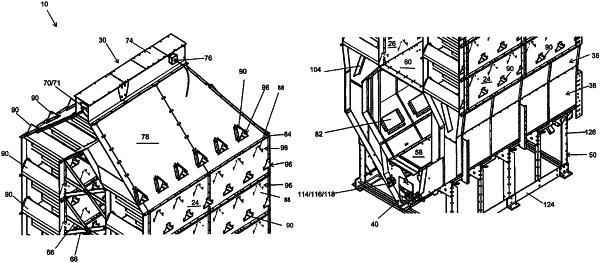| CPC F26B 17/1425 (2013.01) [F26B 2200/06 (2013.01)] | 46 Claims |

|
29. A method of drying grain, the steps comprising:
providing a grain dryer having a pair of grain columns separated by a plenum, and the grain columns having a mixed-flow heating section positioned above a cross-flow cooling section;
passing grain vertically through the grain columns;
drying the grain using the mixed-flow heating section by moving higher temperature air outward through a plurality of inlet ducts that connect to the plenum of the mixed-flow heating section, through the grain within the grain columns of the mixed-flow heating section, and through a plurality of exhaust ducts of the mixed-flow heating section;
passing the grain through the cross-flow cooling section;
cooling the grain using the cross-flow cooling section by moving lower temperature air inward through a perforated exterior wall of the cross-flow cooling section, through the grain held within the grain columns of the cross-flow cooling section, through a perforated interior wall of the cross-flow cooling section and into the plenum of the cross-flow cooling section.
|